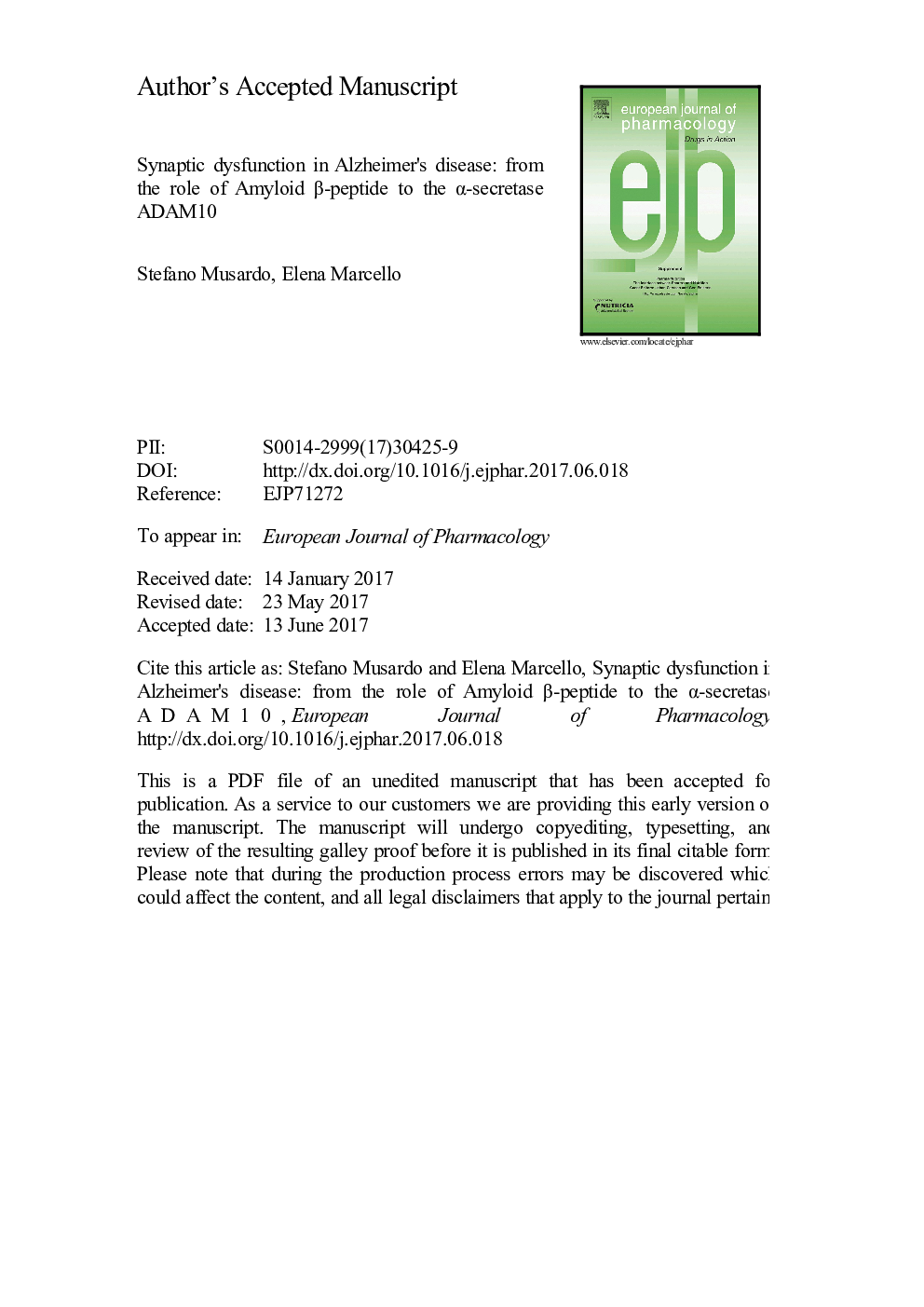| کد مقاله | کد نشریه | سال انتشار | مقاله انگلیسی | نسخه تمام متن |
|---|---|---|---|---|
| 8529729 | 1558863 | 2017 | 28 صفحه PDF | دانلود رایگان |
عنوان انگلیسی مقاله ISI
Synaptic dysfunction in Alzheimer's disease: From the role of amyloid β-peptide to the α-secretase ADAM10
دانلود مقاله + سفارش ترجمه
دانلود مقاله ISI انگلیسی
رایگان برای ایرانیان
کلمات کلیدی
موضوعات مرتبط
علوم زیستی و بیوفناوری
علم عصب شناسی
علوم اعصاب سلولی و مولکولی
پیش نمایش صفحه اول مقاله

چکیده انگلیسی
Alzheimer's disease (AD) is emerging as the most prevalent and socially disruptive illness of aging populations as more people live long enough to become affected. Although AD is placing a considerable and increasing burden on patients, caregivers and society, it represents the largest unmet medical need in neurology, because it is currently incurable. In the last few years, the amyloid hypothesis, which points to amyloid β-peptide (Aβ) as the initiating factor in AD, had a central role in the development of therapeutic strategies for AD. However, the recent clinical trials targeting Aβ have been disappointing. The need to obtain a comprehensive picture of AD pathogenesis is strong as ever. In this framework, this review focuses on Aβ effects on the synapses and on ADAM10, the enzyme able to prevent Aβ formation, analysing its function in the synapse, its contribution to AD pathology and discussing its potential as pharmacological target.
ناشر
Database: Elsevier - ScienceDirect (ساینس دایرکت)
Journal: European Journal of Pharmacology - Volume 817, 15 December 2017, Pages 30-37
Journal: European Journal of Pharmacology - Volume 817, 15 December 2017, Pages 30-37
نویسندگان
Stefano Musardo, Elena Marcello,